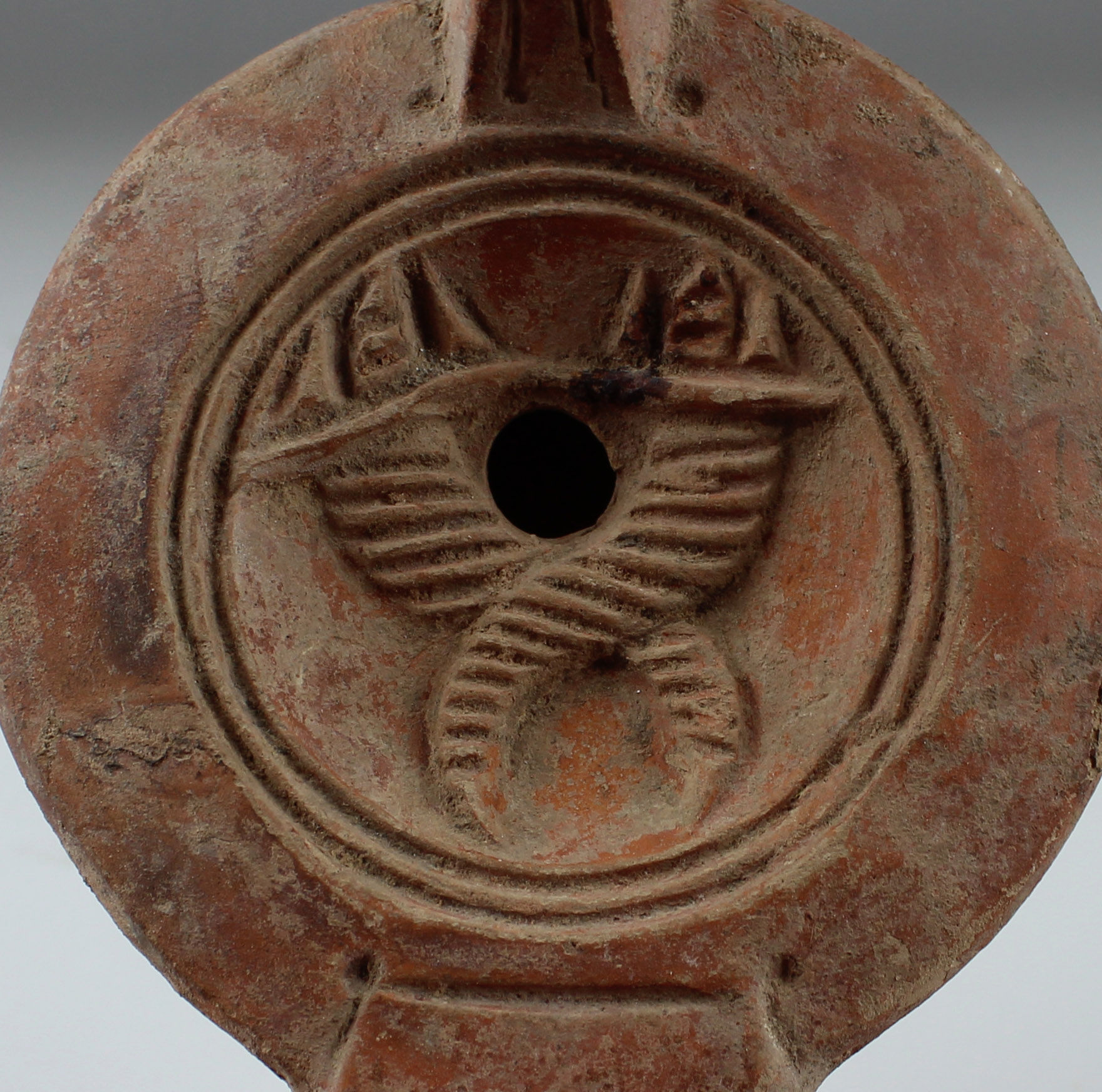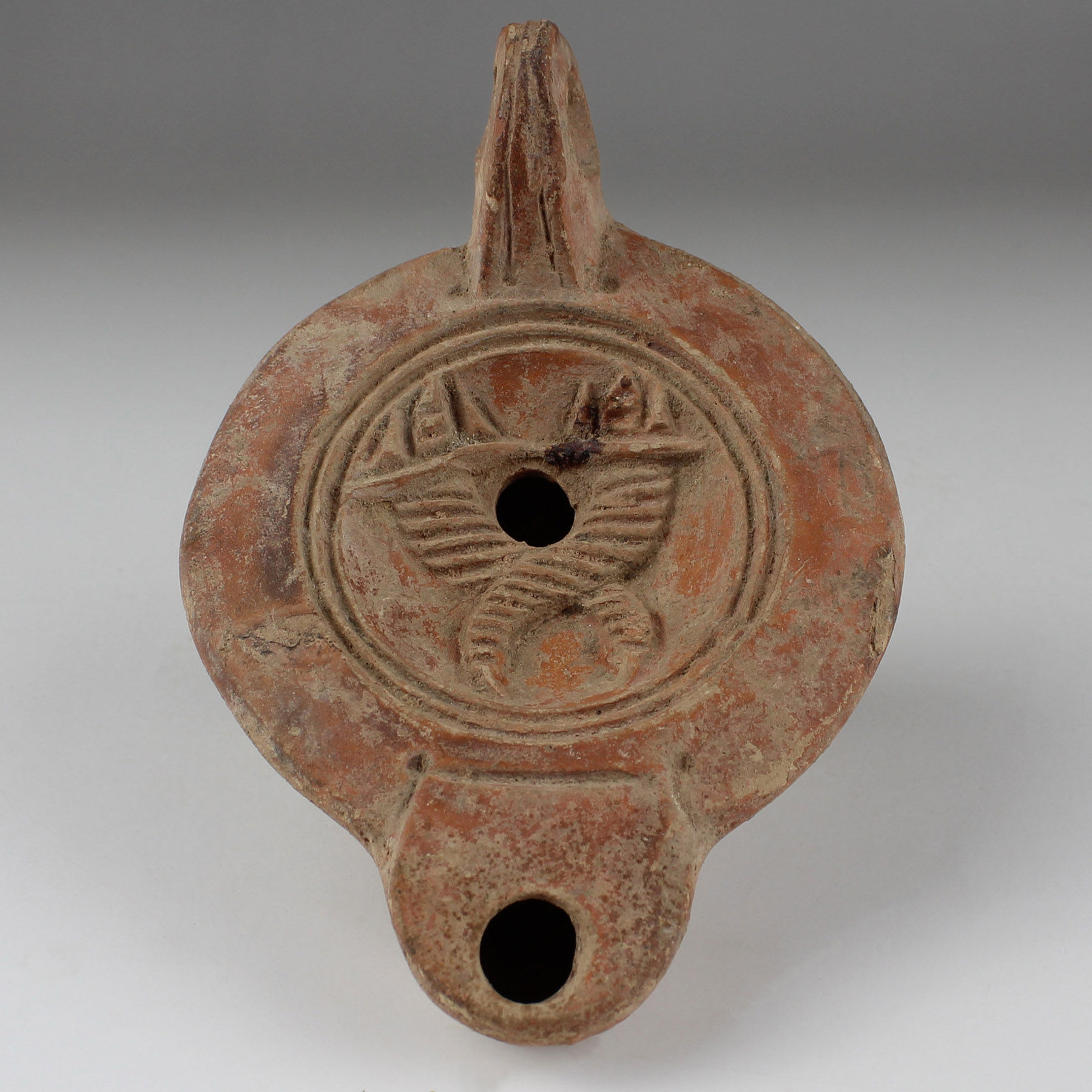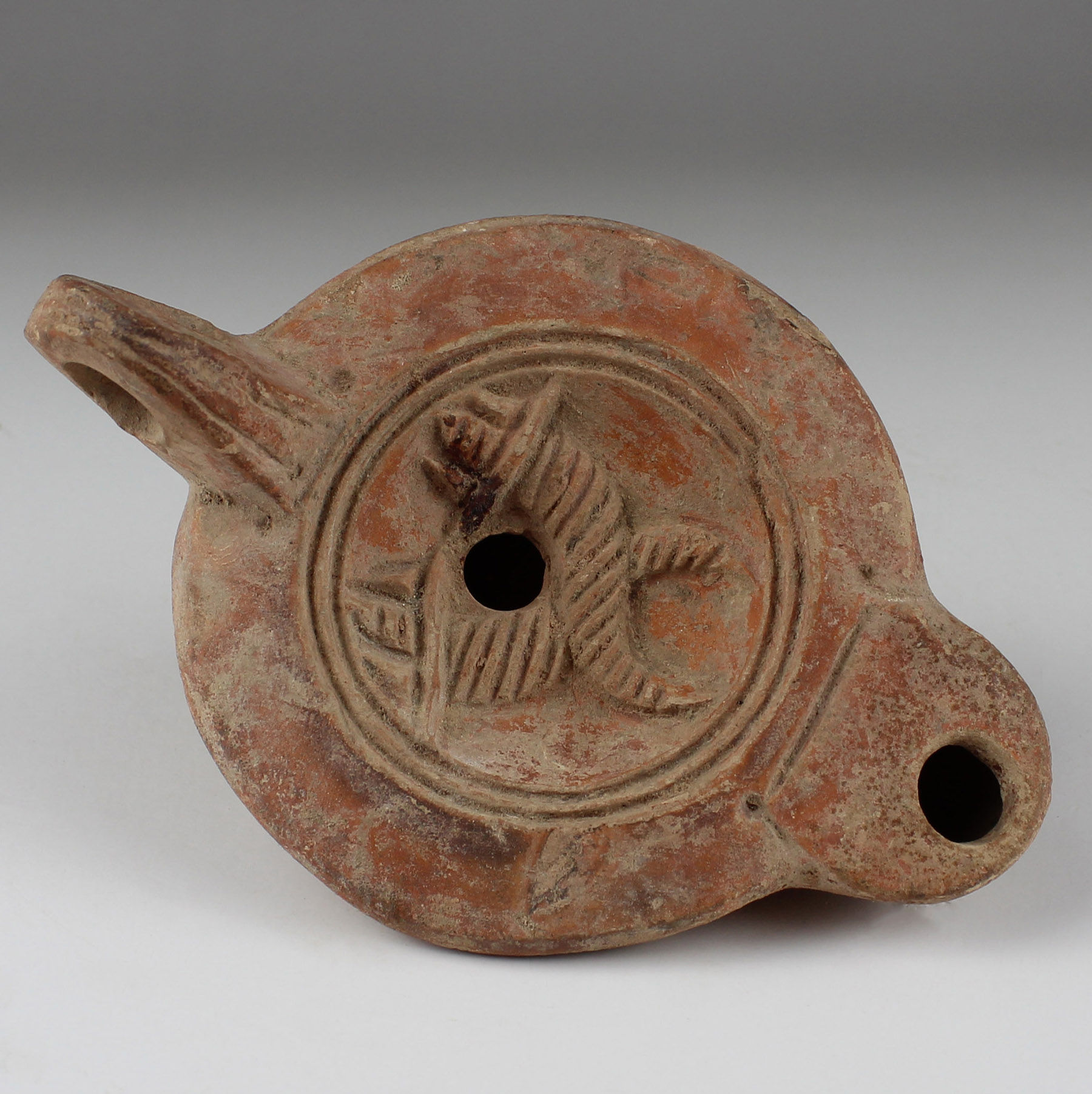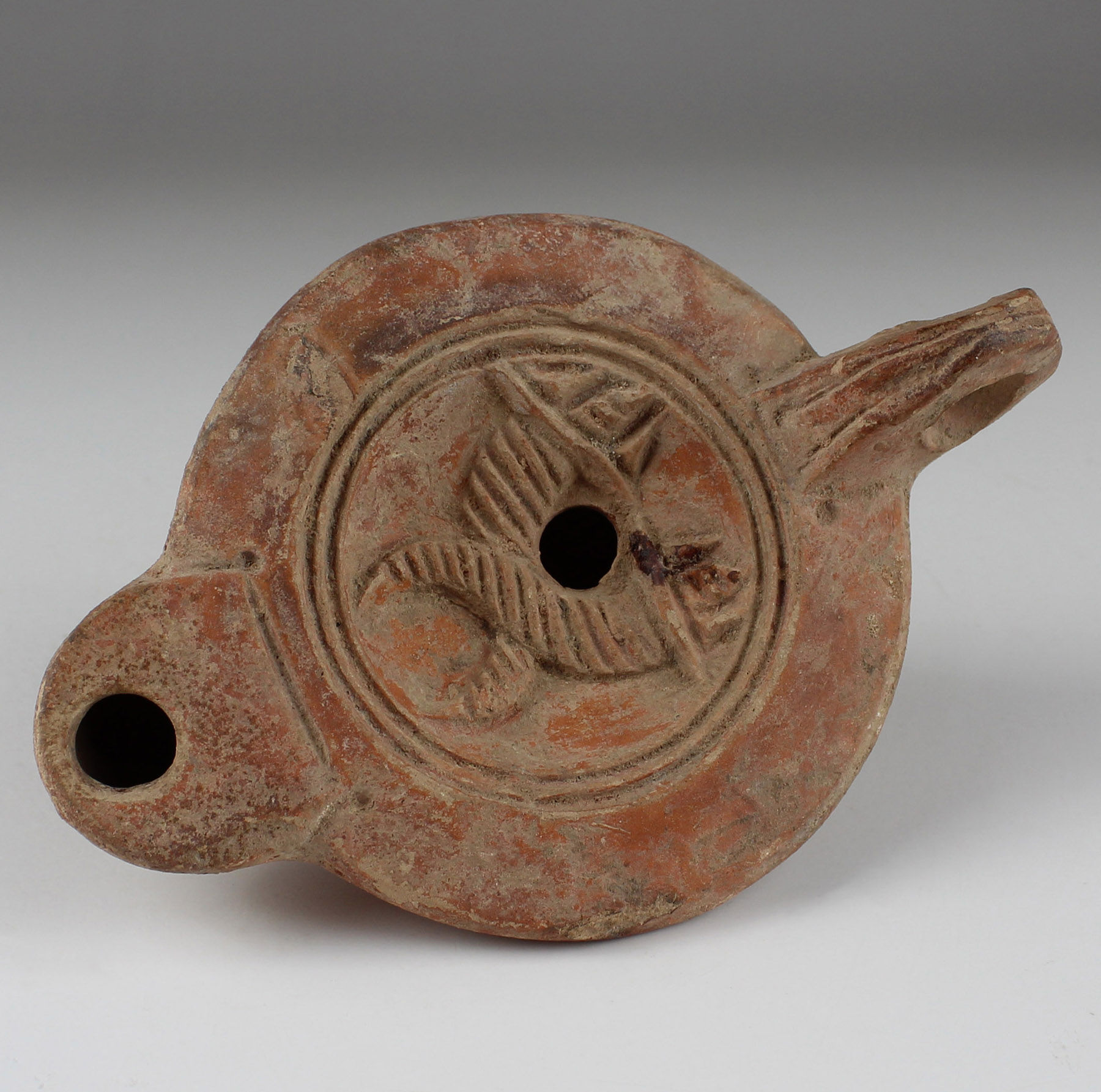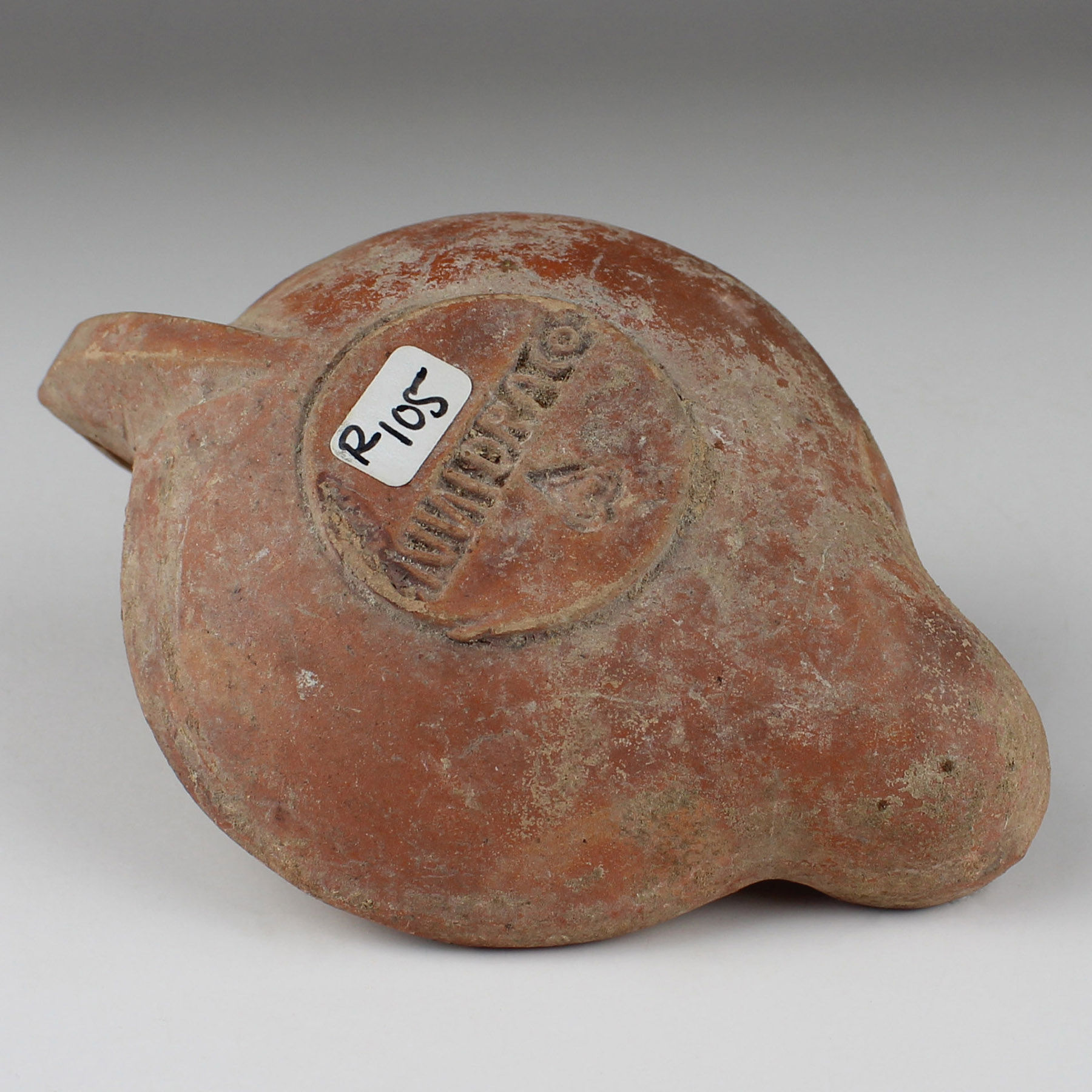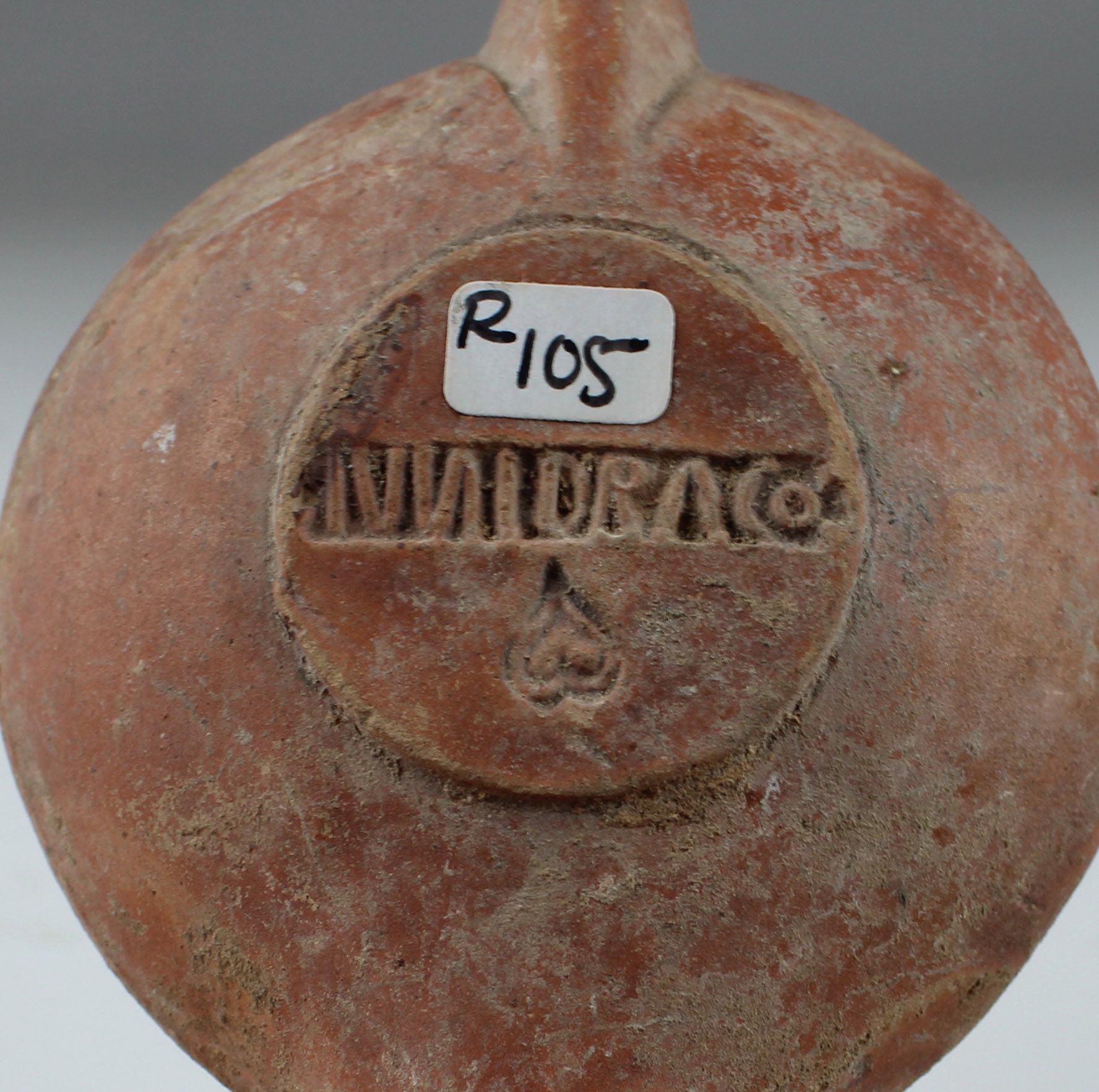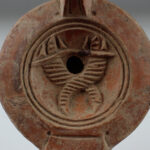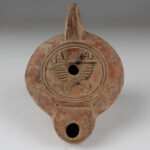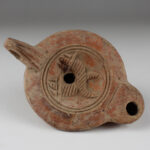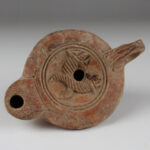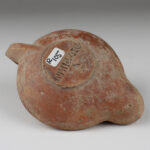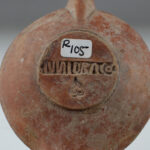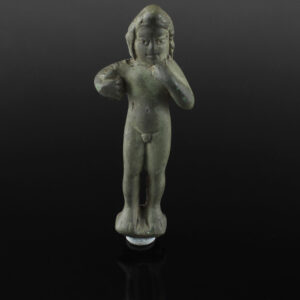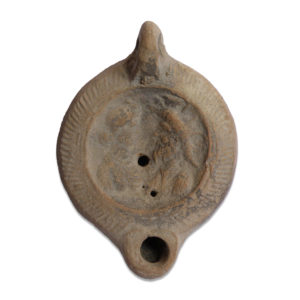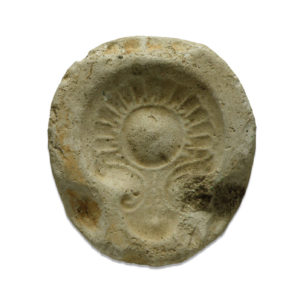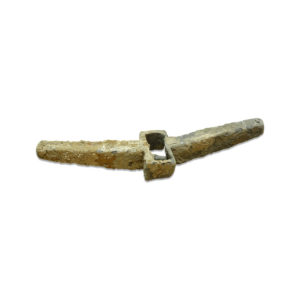Description
| ITEM | Factory oil lamp with cornucopias and makers stamp ‘IVNIDRACO’, Type Bussière D II 1 |
| MATERIAL | Terracotta |
| CULTURE | Roman |
| PERIOD | 1st – 3rd Century A.D |
| DIMENSIONS | 45 mm x 73 mm x 107 mm |
| CONDITION | Good condition |
| PROVENANCE | Ex Emeritus collection (USA), collected from the 1950’s to the 1980’s by a distinguished university professor who served as Department head, Dean and Vice President of a major university. |
The earliest reference to a cornucopia is found in Greek and Roman mythology, which dates back nearly 3,000 years ago. The name itself comes from Latin, cornu copiae, which translates to horn of abundance.
The most likely source of the horn of plenty symbol is a story related to the Greek Zeus, king of all the gods. As a baby, Zeus had to be hidden from his father, Kronos, who would consume all his children. Zeus was kept in a cave with the goat Amalthea, who fed him. Zeus accidentally broke off one of her horns, and the horn then had the power to provide food without end.
The Horn of Plenty symbol has been used in art and literature ever since. It became an attribute of other gods associated with the harvest and prosperity, such as the Greek Fortuna, the goddess of luck and the Roman Annona, goddess of the grain supply of Rome. Depictions of the cornucopia are found everywhere in art and literature through the ages.


